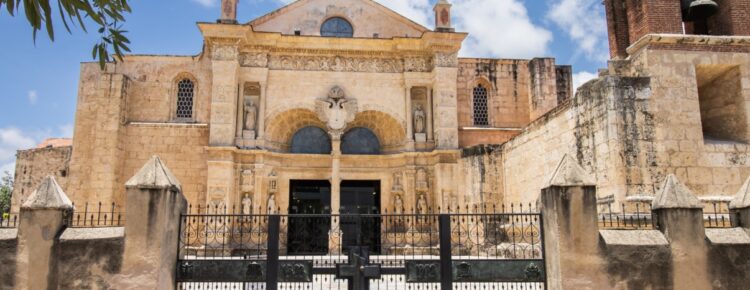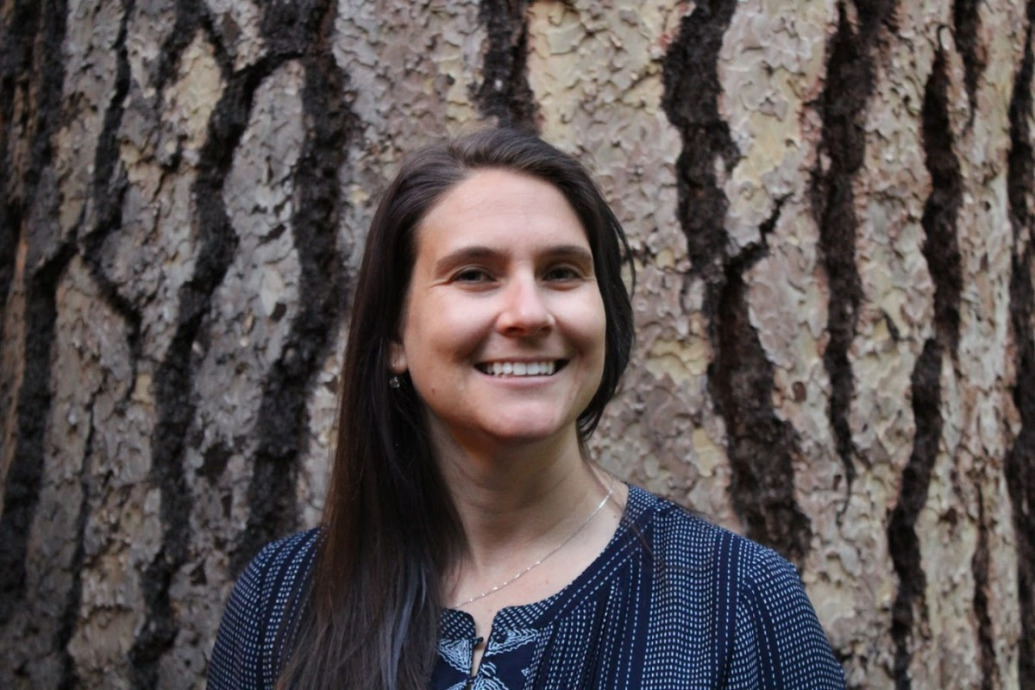Now that we arrived, rested, and got situated at the hotel, it was time to explore the Santo Domingo Colonial district over the next 4 days. Since it was still daylight out, we thought we’d get a walk in before our 20:30 reservation at Jalao. Stepping out of Casas del XVI was always an adventure, given its location in the heart of the Santo Domingo Colonial City and given the number of boutiques, galleries, restaurants, hidden courtyards, and antiquity just around every corner.


We walked around for about an hour, got our bearings of the city, and even stumbled upon the Maraca restaurant we’d be eating at Saturday night and it was barely noticeable form the outside, per usual in the Santo Domingo Colonial district. Music was playing a nearly every corner bodega, and the nightlife we had heard so much about was starting to get into swing. Everywhere we looked we saw colorful hustle and bustle, and heard chatter, music, and laughter shared between friends. White tourists were scarce. We think English speaking tourists in general were scarce. Our kind of scene.
We started to get hungry before our reservation so we decided to head to Jalao early. Earlier we had done some research on Jalao, and it seemed like a fancy night club with live music that locals frequented, with good food and drinks as well. The website advertises that it’s “100% de aqui”. Unassuming exterior, as always, we were in for a tasty treat when we stepped inside.




Some drinks started flowing (Mai Tai, Mojitos….tropical drinks galore) and we ordered some ceviche followed by Mahi Mahi and carne asada. The food was excellent. The service was a little slow as we expected (island time, after all), but the waiter was friendly as we managed some Spanglish to get by. The highlight of the night though was most certainly the live music and dancing. Tonight’s band was Jose Ruiz Entre Amigos and it was caliente Latin dance music.
To get the dance floor going, two older hosts welcomed everyone to the club and danced an amazing salsa on stage. These septuagenarians put all of the 30-50 somethings in the club to shame, and they had attitude to boot! We could have watched them all night. Soon after, the dance floor starting to fill up as the band got going, and the hosts weaved in and out of the floor to make sure the vibe kept up. After about an hour, we decided to call it a night since we were still very tired from our red eye – in retrospect, we wished we had stayed! This place was hopping and it was one of our favorite experiences all trip.
If you want some ideas of a playlist to listen to and dance to when in Santo Domingo, consider:
- Mi Gente – J Balvin and Willy William
- X – Nicky Jam x J. Balvin
- Chan Chan – Company Segundo, made famout by Buena Vista Social Club (Cuban)
The next few days we spent doing much of the same things we did on our first day – discovering the Santo Domingo Colonial city through trial and error, through sight and sound and taste. And most importantly, by foot (we only got in cars to get to and from the airport, and a brief tour of the modern area and Las Tres Ojos National Park). On day 2 in the morning we arranged a historical walking tour with Angel, via the hotel, for $50 per person added to the hotel bill. Angel was a registered guide and part of a larger tour company, as well as a history teacher. He knew all the facts and figures and immediately imparted them to us upon arriving at our hotel door, somewhat awkwardly as guests were trying to bring suitcases in and out and we were standing in their way. We eased in to the next three hours taking it for what it was – a somewhat sterile history lesson with little about modern day politics an economics, views of the people of the history, or what to do around town. Santo Domingo sorely was missing the concept of the free walking tour led by university students.
Angel did have all the dates and people down, rattling them off as we strolled through the Santo Domingo Colonial district, stopping from time to time at many “firsts” – the first city in the Americas, the first church, the first university, the first hospital, and the first headquarters, fortress, and launching off point for Spanish expeditions of the Americas. It was also the site of the first major slave revolt in the Americas in 1522 – we did not learn much about the slave history though because this was not an area Angel wanted to pursue in conversation. He told us many facts but very little social commentary, which matched his vibe of “I don’t judge history, I tell it”.
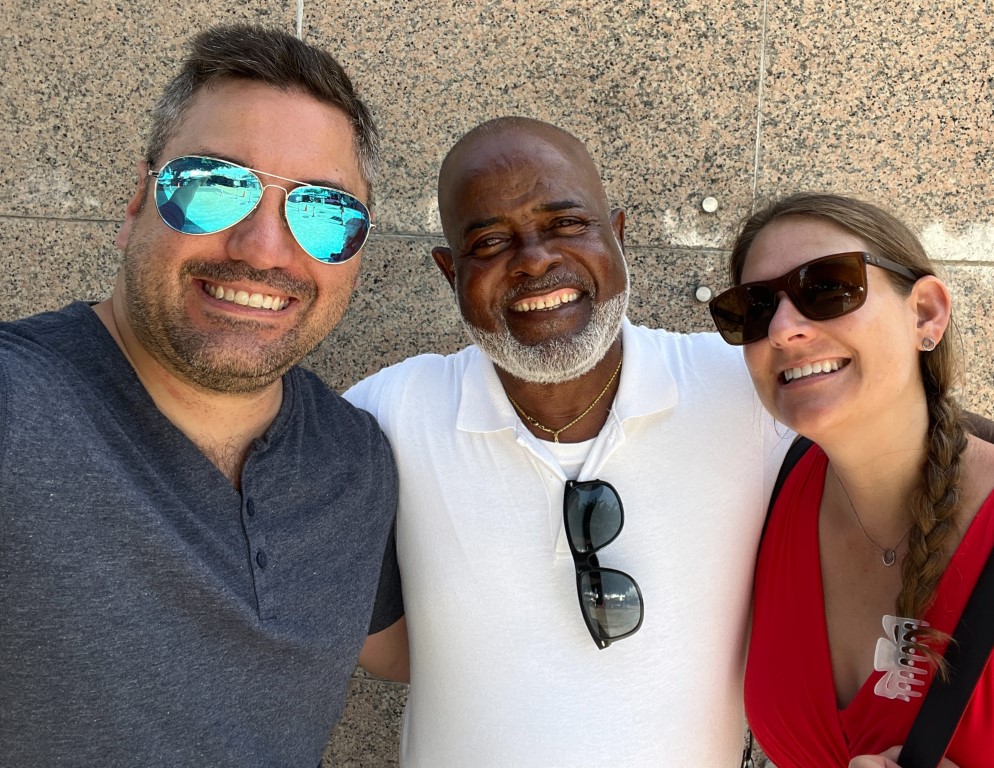
Santo Domingo Colonial City is a UNESCO world heritage site. The city was founded in the late 15th century by Columbus’ brother, Bartholomew Columbus, after an original settlement on the north side of the island of Hispaniola went awry while Christopher Columbus was out exploring. Eventually Christopher Columbus’ son, Diego, came in to the picture and also governed the city, and the one major thing to remember is that it changed hands extremely frequently, between many colonial powers, throughout it’s history. Sir Francis Drake stole and ransomed it for England (and himself) for a period of time, the French also conquered it when they rolled in to the island and grabbed Haiti. Then, after Haiti negotiated its independent from France, the Haitians conquered the Dominican Republic. This was all on the backdrop of a people desperately wanting sovereignty, and an intellectual movement founded by Juan Pablo Duarte (a character with outsized local importance considering he was in exile for most of his adult life), gaining independence briefly in 1844. Then Spain took over, and eventually gave it back to the Dominicans by way of propping up Santana, who was a Spanish puppet and many revolutions ensued. The US also invaded a few times, backed some presidents cum dictators, and the occasional populist Dominican seized power and became menacing as well. The chief example of this being Trujillo, who rewrote most of the city in his own image, as megalomaniac dictators tend to do. By 1961, when Trujillo was assassinated by his own guard (it’s quite the heroic story, told later), the country finally began to stabilize after some more US meddling and internal civil wars, ultimately entering a period of modern democracy in 1965 onwards.
Here are some views nearby our hotel of various churches, memorials, statues, and fun street scenes that we purveyed as we listened to Angel’s accounting of history.









The Santo Domingo Colonial and capital city is now located on the west side of the Ozama River, and is enclosed by fortress walls on some of the sides (La Fortaleza). It previously went by a few other names – Santo Domingo de Guzmán and Ciudad Trujillo – after a Castilian priest and a former dictator (the worst one in the country’s history and that’s saying a lot) respectively.
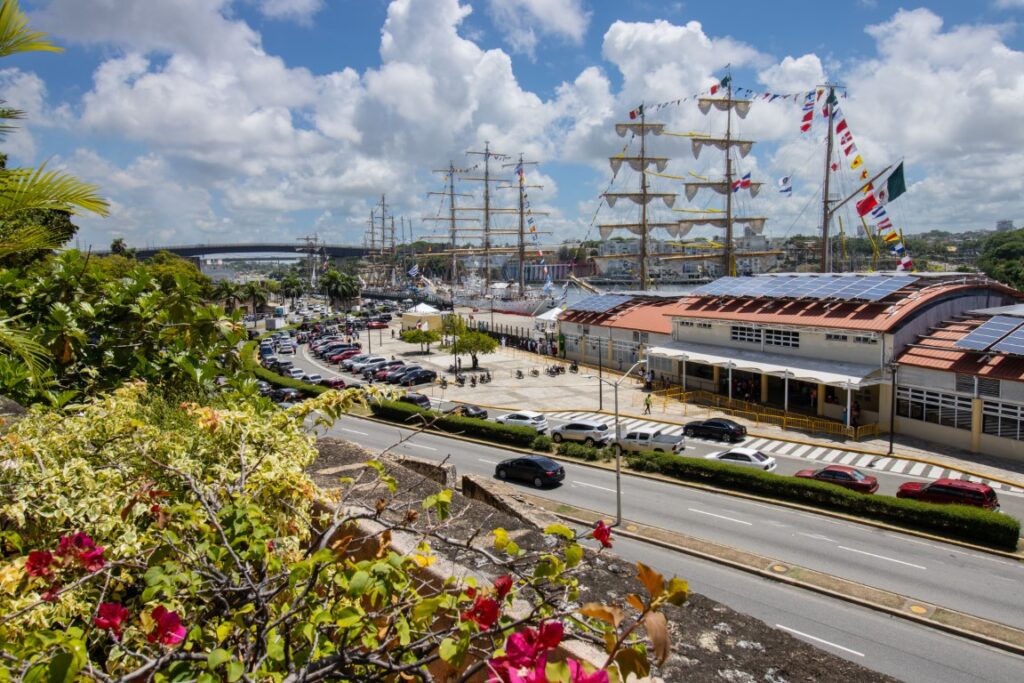
We spent some time visiting a few more churches and monuments to the patriots of the Dominican Republic, seemingly melding in to one in many instances (such as in the Panteon National), all located within the walls of La Zona Colonial.







The Dominican Republic is a highly religious country (Catholic), as well as one that values performing arts, visual arts, baseball, and its national heroes, Juan Paul Duarte being the most beloved. Duarte founded an intellectual movement in his teenage years that brought other revolutionaries within the country together (La Trinitaria), and later became the impetus for revolution, all the while being mostly abroad studying or exiled in Venezuela. There is a whole house in the Santo Domingo Colonial district in honor of Duarte and the part his family played in the revolution, and his role in that for the brief 10 years of his adult life that he was on the island. Complete respect for Duarte and his idealism, and the symbol he ultimately became, but we were astonished that he actually DID very little in achieving independence, and how this detail seemed to matter to no one. Duarte’s followers clenched it, while he is touted as the inspiration.
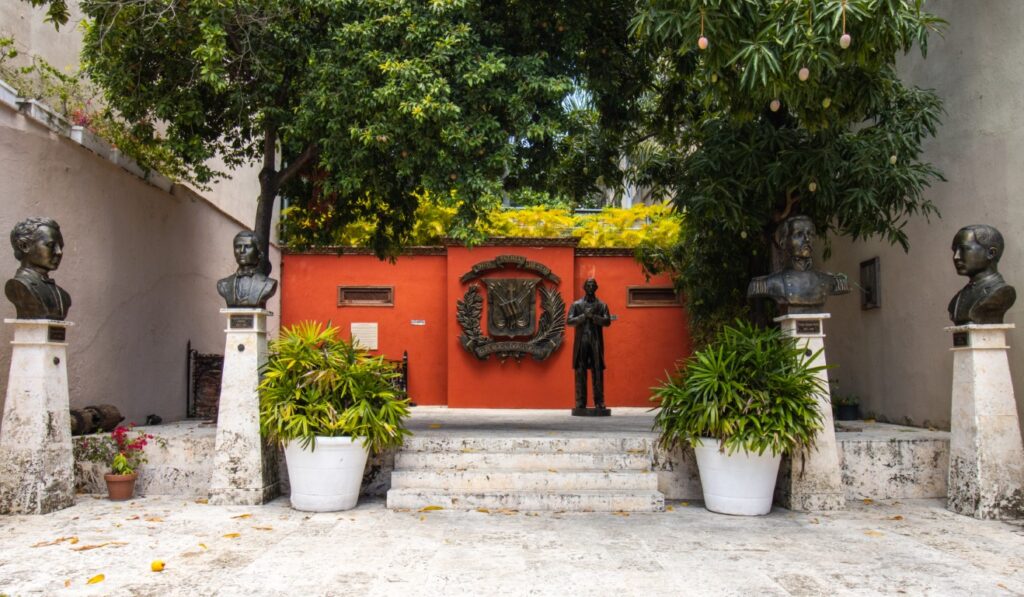
We passed through the bustling main square many times throughout wanderings, also to cut across the city to the north side where more locals lived. This is also where we had dinner the fist night, at Jalao. This was a great square, not only because of the pigeons, but because of the endless street performers and in particular musicians. The local talent was extraordinary, and one of the highlights from the square was a group of blind artists who played Latin hits. Everywhere we went, we heard Latin pop, and this was the backdrop as we moved and grooved through the Santo Domingo Colonial City.



We found the city to be quite safe, as long as you stayed within the old city walls. As you ventured north you had to practice some common sense like keeping your backpack or purse on the front of your person (like the locals) and also leave your bulky camera at home. Occasionally people would try to get you to come in their shop, or offer you a ride, or try to sell you something, or ask you if you want to change money – but the great thing about this place is they never tried too hard! After one attempt they would stop. It was definitely too hot to put more energy into it than that, which we appreciated.
Heading to the more north part of town, you have to walk up a hill which leads to a large park with historic ruins. It’s also very nearby to Chinatown, which we checked out Sunday morning to take in the local market.



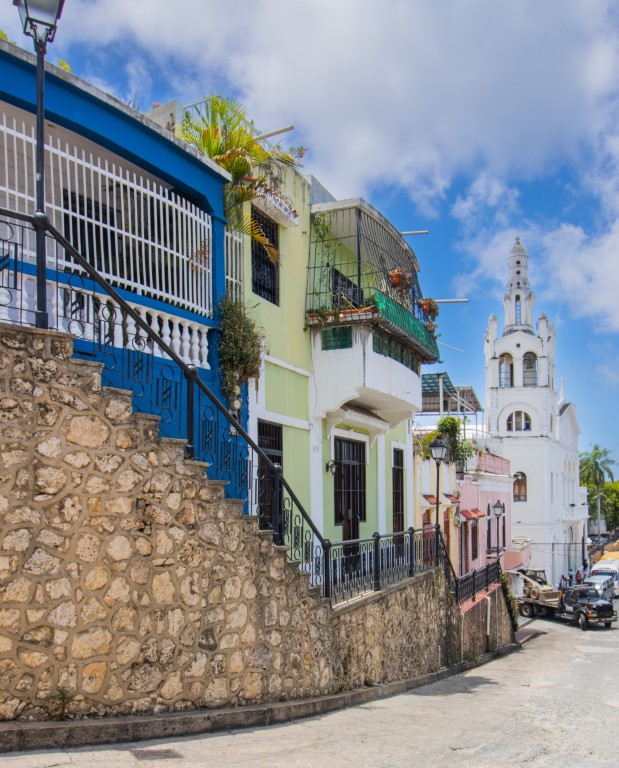
The park with the ruins (Monasterio de San Francisco) was also the site of our Sunday night public concert, complete with dancing in the streets. Dancing with Brendan, I decided to show off a little and have some fun. As a result, several men asked me to dance, while gesturing to Brendan that he didn’t know what to do with me. What a great feeling (for me)! The frozen tequila sunrises from the local bar hit the spot and also got us quite drunk. This was the second highlight of our Santo Domingo night life.


Between all the Zona Colonial touring with our guide, Angel, coupled with many of own adventures, we enjoyed the local food and drink and Santo Domingo culture. Some highlights included a rum bar next to the main square called Sugarcane La Casa del Ron, as well as a local brewery called La Cacata (which means tarantula in the Taino indigenous language). La Cacata means rooster in Spanish, so we were confused for a while about the brand until we were able to Google it. We learned we could get beers to go and bring them back to our hotel, to consume while lounging at the pool and avoiding the $15 beer prices at the hotel. La Cacata also had some killer nachos, oddly were out of tequila (but then again, brewery?), and made a unique passionfruit (chinola) mule.






Maraca, our Saturday night restaurant, was a weird experience. Let me start by saying that the food and drinks were excellent, and the ambience could not be beat. However, for a 20:30 reservation arranged by the hotel, we weren’t seated until after 22:00 after being shuffled off to the bar to sit and spend money on drinks, while the hostess forgot about us. We languished there while watching many other couples who arrived after us being seated before us, and when asked when we would be seated were repeatedly told cinco minutos for over an hour. We witnessed a choking episode at a nearby table as well, following by an hour of the entire table and other diners coming over to the abuela who choked and wishing her well. She might have been a big deal, but she also might just have been elderly and living in a culture where people respect their elders.
Finally we were seated in the garden area in the back and had a great experience from there on out. We had read that service could be spotty at Maraca, and in Santo Domingo in general, so we were patient, but still frustrated by the experience and it overall colored what might have been an exceptional night. This place was trying to be just a little too cool and upscale, and we were clearly not cool enough. Others were, and were treated accordingly. For dinner, we shared some crispy eggplant (yum!) and pork dumplings (asi asi) and Brendan had a steak while I had the shrimp over rice (which turned out to be incredibly rich, cheesy, and delicious).



Another notable meal out of left field (baseball analogy – cuz the DR!) was Time Creative Vegetarian Kitchen, a vegetarian restaurant located just behind the main church (Nuestra Senora de la Encarnacion). We noticed more tourists in there than any other restaurant we had been to. The food and service were impeccable, in particular the ramen and the tortilla soup. Hard pass on the Caesar salad and the arepas though. This was our Sunday night meal after the dancing in the park, and it was great to see a first class vegetarian restaurant in a typically meat-forward country.



For our final night, Monday night, we took it easy and went to the beach restaurant M7 to take in the ocean, get some fresh air, and have some Italian food. The service was a little slow to start, but got going eventually. We got the gnocchi and the pizza, with a Caprese salad to start. Everything unfortunately came all at once, and without side plates, but we made it work. The food was pretty good, although a little heavy (especially the gnocchi). I’d highly recommend the sangria. The ambience was lovely and, since it was night, the beach also looked enticing. This part of the country was not known for its beaches, which is why most beach goers head east to Punta Cana.
We had some art interludes as well throughout our Santo Domingo cultural escapades. In particular, we bought some art at several places Angel recommended to us. Mercado Artesania Aloyesia had a large variety of the same art available on the promenade, and where we picked up some Haitian art (C/ Isabel La Catalica #152, Ciudad Colonial, email manuelabreuaa (at) gmail.com). “Maria del Carmen Galeria de Arte” had higher quality art by known local painters, with authentication certificates, and this is where we picked up our Miguel Gomez (Arz. Merino #207, Ciudad Colonial 809 682 7609 / 829 215 1020, marthopm (at) hotmail.com). Miguel Gomez is a “known” artist within the city, probably not beyond, but commanded higher prices given he was the head of the college of art in Santo Domingo. We probably overpaid at $175, and who knows if it was really authentic, but we loved the piece and were happy to engage in the negotiation. The Haitian art we got a huge discount because we knew it was less valuable, wanted it less, and we bought a mask as well to enter in to a bulk deal, paying $100 for both. USD were very handy on the street and in the shops, as the vendors didn’t want to deal with credit card fees and would offer large discounts for cash, as well as for knowing Angel. We played the amigo de Angel card frequently. Of course we were probably paying more for saying this, but it was fun nevertheless. We each brought $250 in USD, mostly in one dollar bills, and wished we had brought $500 each, and fewer one dollar bills. Ultimately we ended up going to the ATM to withdraw local currency once, and there was a maximum limit of $200 you could withdraw each day. The Dominican currency was in a closed system and you were not allowed to take it out of the country. Dollars were accepted everywhere, as were credit cards at all restaurants in the Santo Domingo Zona Colonial.
Our most special art experience, however, was a random art gallery across from them La Cacata called Casa de Teatro, that was just setting up a new exhibit of a Dominican artist from Puerta Plata, Simón Bolívar De los Santos Guzmán. The exhibition hadn’t officially started yet (opening day was Tuesday), but the gallery was still open to peruse as it was being set up. We were greeted by the artist and given a small tour, and discussed some of his pieces, which had surreal and abstract elements coupled with daily scenes of Dominican Republic life. Several pieces really spoke to us. The first being a picture of antiquity and modernity crumbling into the ocean and in to nature, and the second being a representation of what we felt was the local jazz and music scene that we experienced. Abstract yet relatable with the improvisational nature of the subject it was trying to portray – jazz itself. All of Simón’s works were acrylic, and occasionally incorporated unique elements like mixed media or glow in the dark paint. We loved the jazz musician piece so much we made an offer the following day and even negotiated a little, but ultimately we couldn’t come to an agreement on a fair price and in fact we were out of USD and had no way to get $1500 in cash quickly. After also receiving a private viewing of Simón’s watercolor collection in a portfolio binder, we agreed to stay in touch and see how the exhibition unfolded. By the time we returned to the US, we were emailing with Simón about a smaller commissioned piece, similar in nature to the jazz artist piece. We are in the process of arranging that, a work that will take 40 days to complete, as I write this blog.
The final episode of our Santo Domingo experience included an adventure with Angel and a driver to the modern part of Santo Domingo to the west of La Zona Colonial, and the Santo Domingo del Este, containing the Parque Nacional Los Tres Ojos. On the way out of the Santo Domingo Colonial city, we stopped in front of the Nacional Palace (President’s residence).

Then onwards to the Santo Domingo capital area, we learned about the heroes who assassinated the dictator Trujillo at great personal risk, and ultimately death after retaliation from Trujillo’s son. Trujillo had a stranglehold on the country, running it like a mob and taking whatever he wanted, including raping women and violently murdering, often publicly, those related to government officials who opposed him. The people desperately wanted him gone, but few had the courage to oppose him given the consequences. This monument was in honor of the heroes that sacrificed to rid the country of a cruel dictator which still reverberates even today in modern memory, much like the story we heard when we were recently in Santiago, Chile.


Next stop we went by the wealthy area near the waterfront, which was where El Meson de la Cava, a restaurant we had been eying, was located. Angel was able to take us through the restaurant so we could have a quick look at the cave it was built within, making it quite unique. We had read that it was all about the ambience and less about the food, and were grateful for the quick tour without the expensive price tag of a meal. Angel seemed to know everyone around town and was an obliging guide.
We went through the government area as well. The next day, we found out that the Ministry of the Environment, in the area where we had been, was shot up. We still don’t know why, but we found out by official cars driving through the streets of La Colonial Zona making announcements which we think we akin to “this has happened, be on guard”.
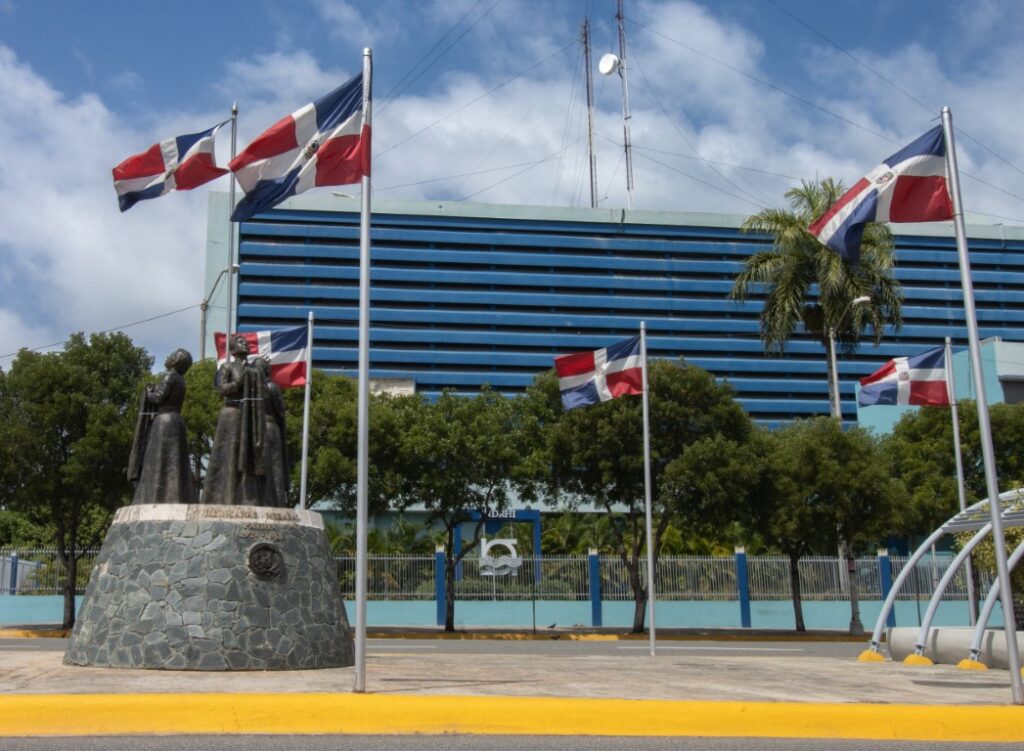
Our penultimate stop with Angel to learn about Santo Domingo was The 3 Eyes National Park. We were hoping for some relief from the heat, but being closer to the water of the caves and out of the wind actually made the air more stifling and humid. That said, it’s worth visiting and is a unique experience, albeit not much of an outdoor excursion. There’s only a small loop around the park, and part of it, as Angel advised, was dangerous because the loop abutted a slum with a fence that was easily jumped. We took the loop nevertheless, and were fine.








Only 2 hours through our city excursion, we were almost done, with only one stop, the Columbus Lighthouse, was left. This was a very odd and controversial memorial “honoring” the 500th anniversary of the landing of Christopher Columbus in 1492 on the north part of the island. Inaugurated in 1992, but with original architects entering a competition to design it in the 1930s, it was just as much as an homage to bringing Christianity to the New World as it was a monument to Columbus, the spirit of exploration he brought, but also the exploitation of local civilizations that resulted from opening up the door of colonial “discovery” in the Americas. On top of that, the monument ran way over budget, and the city had to displace thousands of people to clear the land to build it on. It’s said that, when the monument is lit, the torch can be seen from Puerto Rico. We did not care for any of it, and the concrete monstrosity seemed out of place.


For the city portion of the tour, we paid Angel $60 per person plus a tip for his services over the two days. He dropped us off at the Tovar Experience, a pop up exhibition of Ivan Tovar’s art organized in an experiential manner similar to the Van Gogh exhibit touring in the United States. While we intended to go on Sunday after the tour, the wait time as too long, so we ended up tucking it in on Monday, which ended up being a pretty dead day and a day of loose ends. The exhibit was not only a great way to beat the heat, but was an enjoyable way to take in Salvador Dali-esque local artist that we had never really known much about. Monday was the last day of the exhibition before it moved to France. There were a lot of nipples and abstract creatures, as well as humans melting in to objects, all with breasts and nipples of course. We rather enjoyed it!





After the exhibit, we grabbed some popsicle condensed frozen milk (I had the blueberry and Brendan had the mocha chip), tried some chocolate (although we never ended up going to the Kahkow museum), and picked up the certificate of authenticity of our Miguel Gomez painting from the art shop.
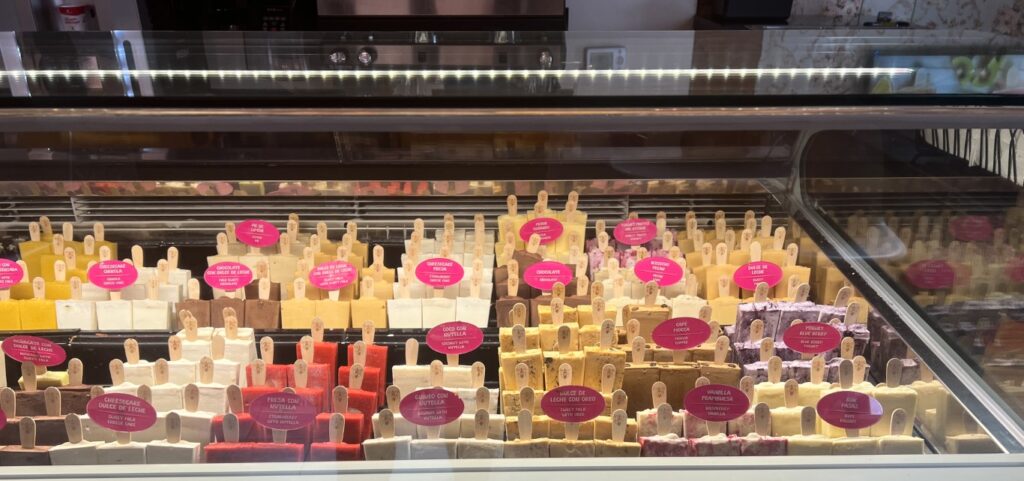
Monday was also the day COVID tests for us to re-enter the US. Spoiler alert: we tested negative in a farce of a test where we paid a doctor (through the hotel) to come to our room and barely touch our nostril to take a sample and lo and behold furnished a negative certificate. A $40 per person racket. Days later, naturally, the US repealed the order requiring travelers re-entering the US to test negative within a day of traveling in.
A few other things we did during our time discovering Santo Domingo culture: went to the Larimar museum to learn about the history of this blue stone indigenous to the Dominican Republic, and also briefly went in to the rum museum as part of the tour with Angel (it was nothing to write home about) and tried a cilantro rum as well as a passionfruit rum, the passionfruit being the more natural pairing of the two. The cilantro rum reminded me of the peppery gin I tried in the Falkland Islands (both were jarring!).
And that, my friends, pretty much wraps up our 4 perfect days experiencing the hospitable and accessible Santo Domingo culture, and our first visit to the Dominican Republic. Travel back on Tuesday was inconsequential, again being easy and on-time despite traveling through Newark and having to go through the nonsense of collecting an re-checking our bags, exiting and re-entering the airport, and what not. We arrived back to Denver in one piece late that night, hand carrying our precious art which all survived over-crowded flights and luggage compartments, and were very glad to see our kitties Chaucer and Freya again. Later that week, we tested positive for COVID – breaking the seal of being COVID virgins for over 2.5 years – and also possibly proving the farce of the Santo Domingo COVID tests we received. Then again, we most likely picked it up traveling home through Newark or Denver, or possibly even at the crowded Jurassic Park movie we saw later that week in Denver. All things considered, we were grateful for our quick trip to Santo Domingo, tucking in country number 96, and dodging the ‘rona while we were there.
‘Till next time, the restless road rests her suitcase.
